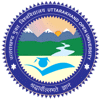OER-UOU-elearning: Unit 1.2
|
Unit 1.2 - Introduction to E-Learning
“E-learning can be defined as the use of digital technologies and media to deliver, support and enhance teaching, learning, assessment and evaluation” (Armitage & O’Leary, 2003). “E-learning refers to the systematic use of networked information and communication technology in teaching and learning” (Naidu, 2003). The American Society for Training and Development (ASTD) defines e-learning as teaching and learning “delivered, enabled or mediated by electronic technology for the explicit purpose of learning” (Rossen & Hartley, 2001). They include online learning, Web-based learning, and computer-based learning within e-learning. In the Corporate E-Learning report, e-learning has been defined as “a wide set of applications and processes including computer-based learning, Web-based learning, virtual classroom, and digital collaboration” (WR Hambrecht & Co., 2000, p. 8). Here e-learning has been equated with “technology-based training.”
|
| ||||||||||||||
| OER - Post Graduate Diploma in eLearning Uttarakhand Open University |
Design By: Yogesh Munjal | |||||||||||||||
